Easier found than caught: local fishermen tested by bluefin tuna
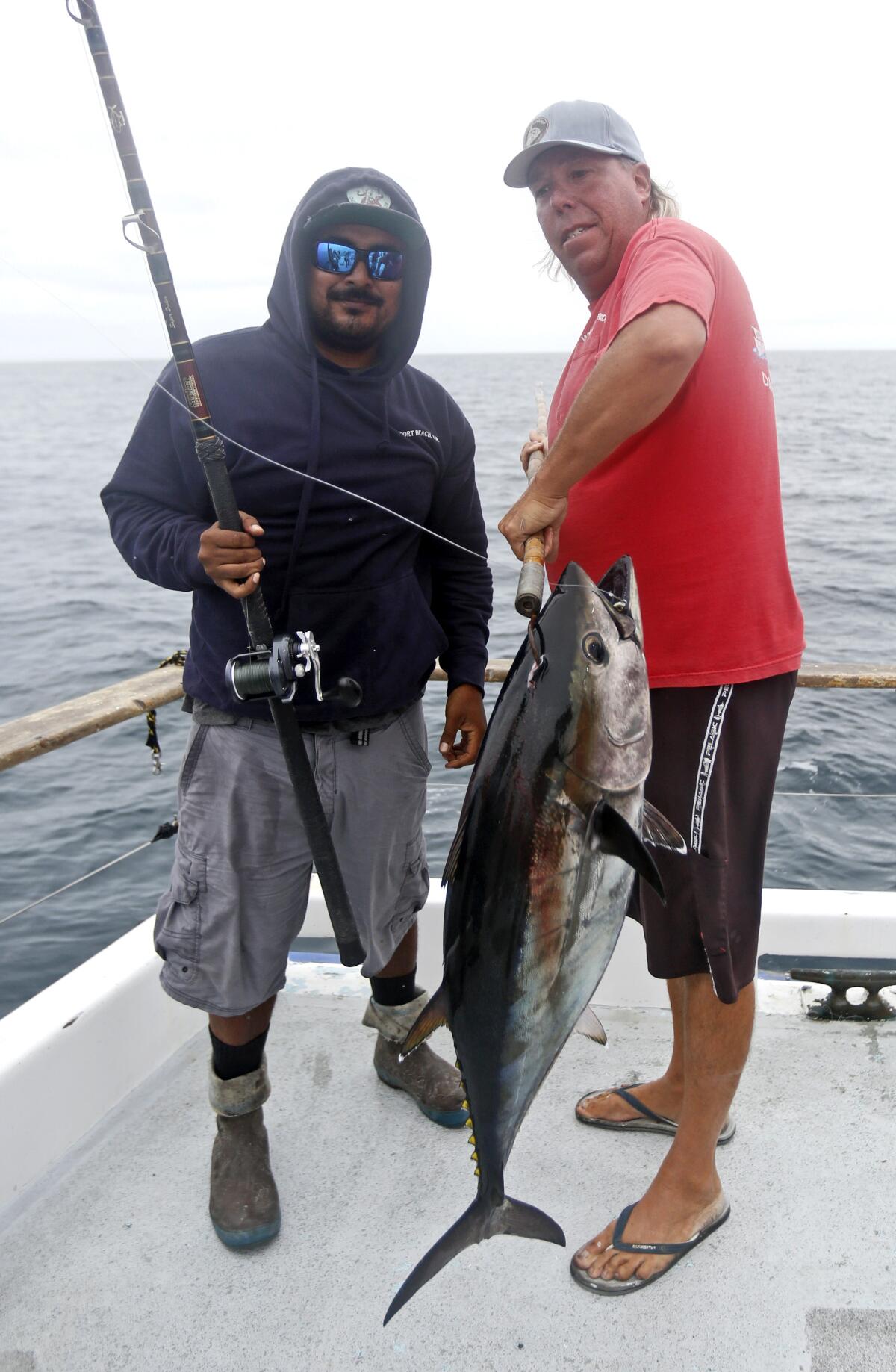
- Share via
The sun had yet to rise, the darkness obscuring the view of the vast ocean beyond.
Free-flowing traffic on the way to the harbor in Newport Beach is as good a sign as any that a full-day fishing trip isn’t for just anyone.
For the bleary-eyed fishermen showing up to the dock at Davey’s Locker, though, this is too good, and too rare, of an opportunity to pass up.
Bluefin tuna have been showing up in the fish count for close to a month, and while the species may be found in other parts of the Southland more regularly, some of the seasoned anglers have shown up for a challenge.

“The last three years, off and on, we’re catching bluefin tuna,” Arnold Kubo, 73, of Costa Mesa said. “We never saw bluefin tuna on the coast here. Never. This is a once-in-a-lifetime deal. That’s why so many guys come out and try to catch a bluefin.”
Kubo, who said he has been fishing for 68 years, was one of about three dozen to come aboard the Western Pride for a full-day fishing trip on Wednesday.
He said bluefin are more commonly seen near San Diego. He cracked a wide smile as he thought about the challenge of reeling one in.
“Bluefin are really, really hard to catch,” Kubo said. “They’re smarter than all the fish out here. They’re more sensitive to hook size [and] the quality of bait. You’ve got to get the best bait you can get and use the smallest hook and the lightest line you can. They see better. They’re just smarter. They’re hard to catch.”
For a good portion of the day, the patrons are singing the fisherman blues. One comments that it is not ideal to have the birds chasing the back of the boat. The birds are waiting for bait to be dropped into the sea.
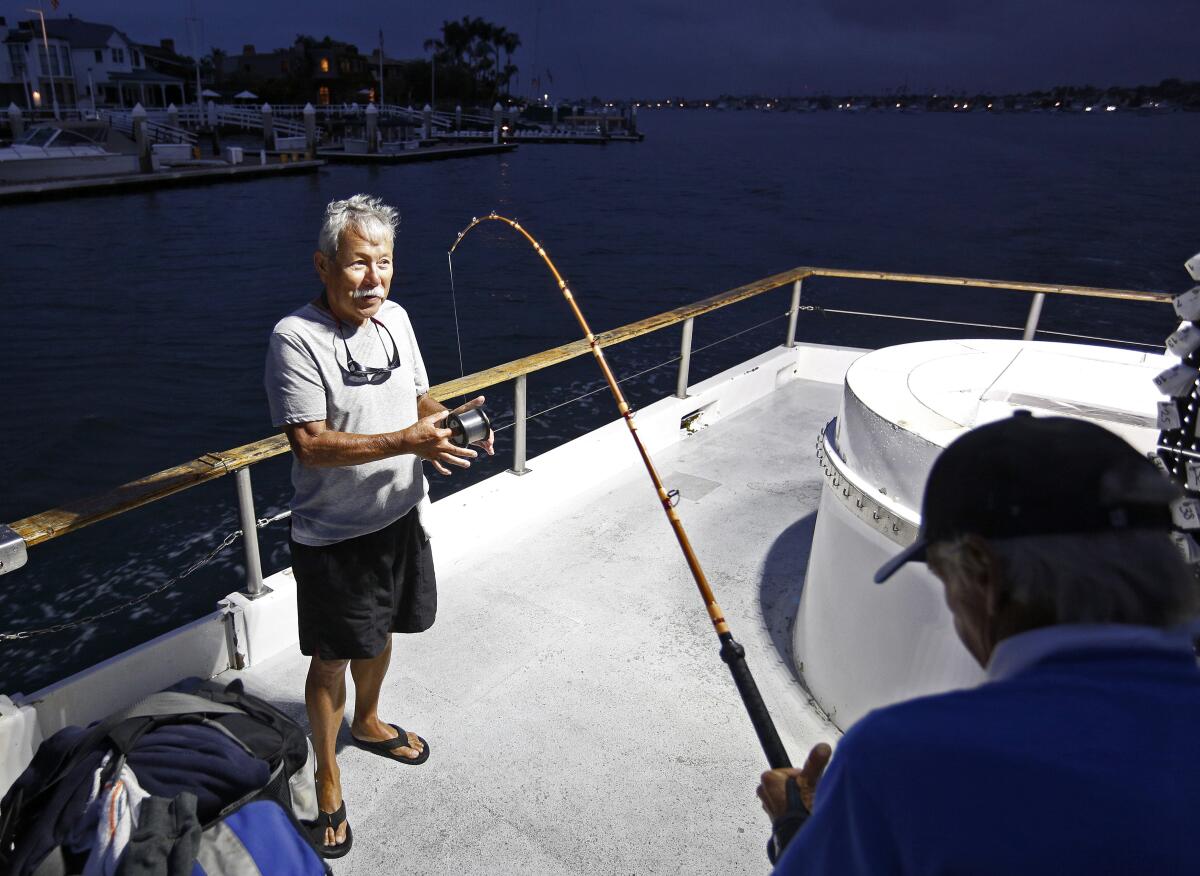
Captain Paul Hansen pulls up alongside various spots of kelp, giving the anglers a chance to cast their lines. The search for the bluefin appears endless.
“That’s why they call it fishing, not catching,” another remarks.
Just when the wind seems to have come out of the sails, the luck changes. The Western Pride happens upon several schools of bluefin boiling at the surface in the span of an hour. Within that window, the crew brings in one bluefin and a dorado.
The schools of bluefin seen in the late afternoon were found near the 14 Mile Bank, about halfway between Catalina and Newport Beach, Hansen said.
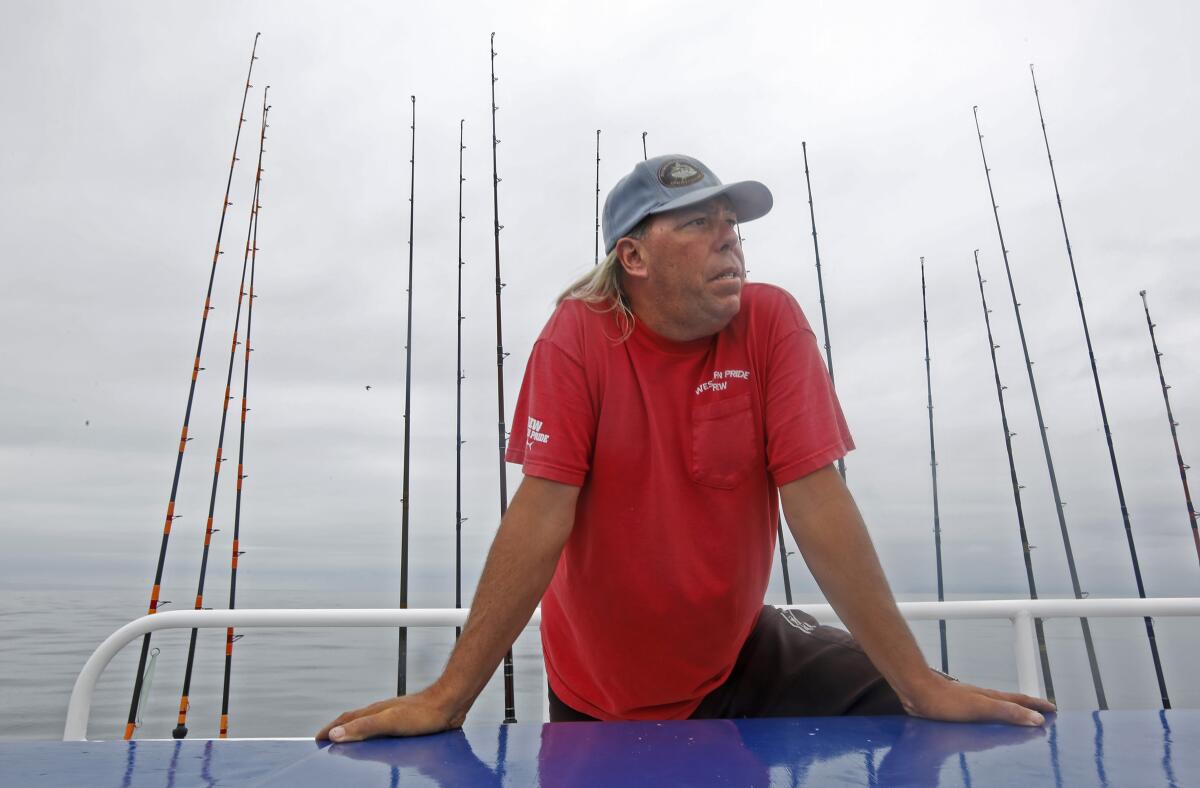
During the recent run on bluefin, Davey’s Locker had a record catch — a 130-pound bluefin not far offshore. It took more than an hour to bring the fish in.
“We were coming down the coast from fishing sculpin up off Long Beach, and the whale watch boats, they told me they saw a few fish around, a few bluefin,” Hansen said.
“We were driving down and saw a big foamer of tuna, kind of like the ones that we saw today, and threw bait on the fish, and the fish came up on our chum, and we hooked six that day.”
Marine biologist Nancy Caruso, who runs the nonprofit Get Inspired, said that the abundance of bluefin near Orange County is likely due to where they are finding their food.
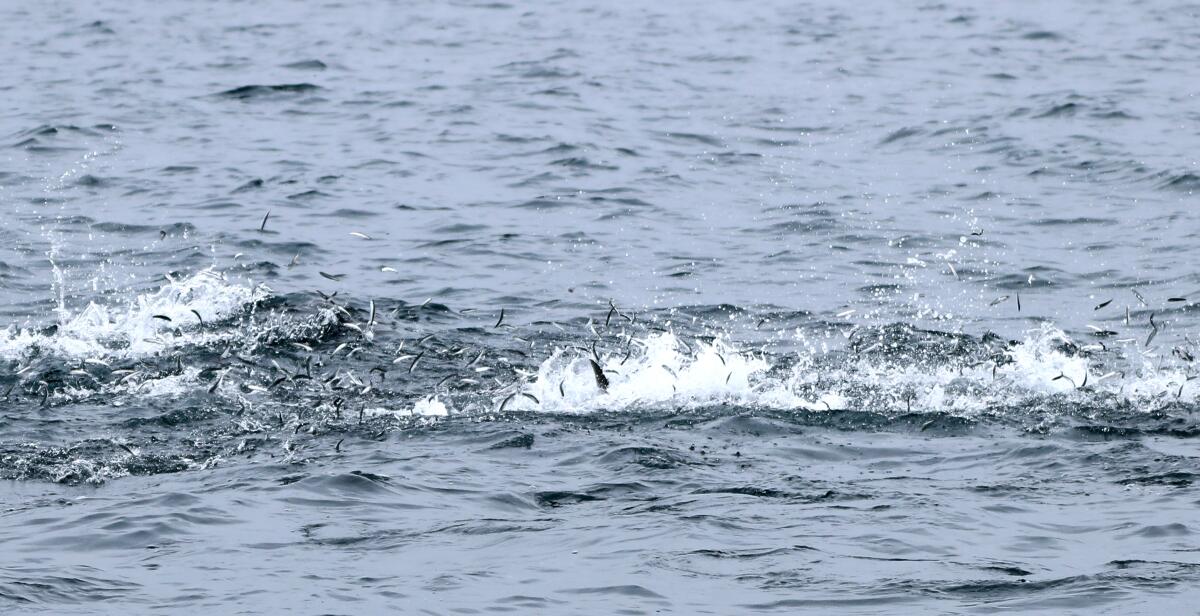
“The only reason they move around is to chase food, and so their food is coming up through … Orange County’s waters,” Caruso said. “Usually, you find the bluefin tuna in the little, warmer pockets, where the water kind of moves in pockets off the coast, and the fishermen go out.”
Nate Jaros, a curator of fish and invertebrates at the Aquarium of the Pacific, said that while it may be unusual for bluefin to be caught close to the Orange County mainland, it is not out of their migratory patterns.
“They’re migratory,” Jaros said. “They spawn in Japan, and they come over, and they typically live off the Mexico and California coasts for the first one to three years, give or take, before they go back across.”
Bluefin began showing up consistently in the fish count at Davey’s Locker on July 31. A total of 47 bluefin were caught from three fishing trips on Wednesday.
The next two days, Davey’s Locker reported just three bluefin in its daily fish counts. The single-day high for bluefin this month came on Tuesday with 55 caught.
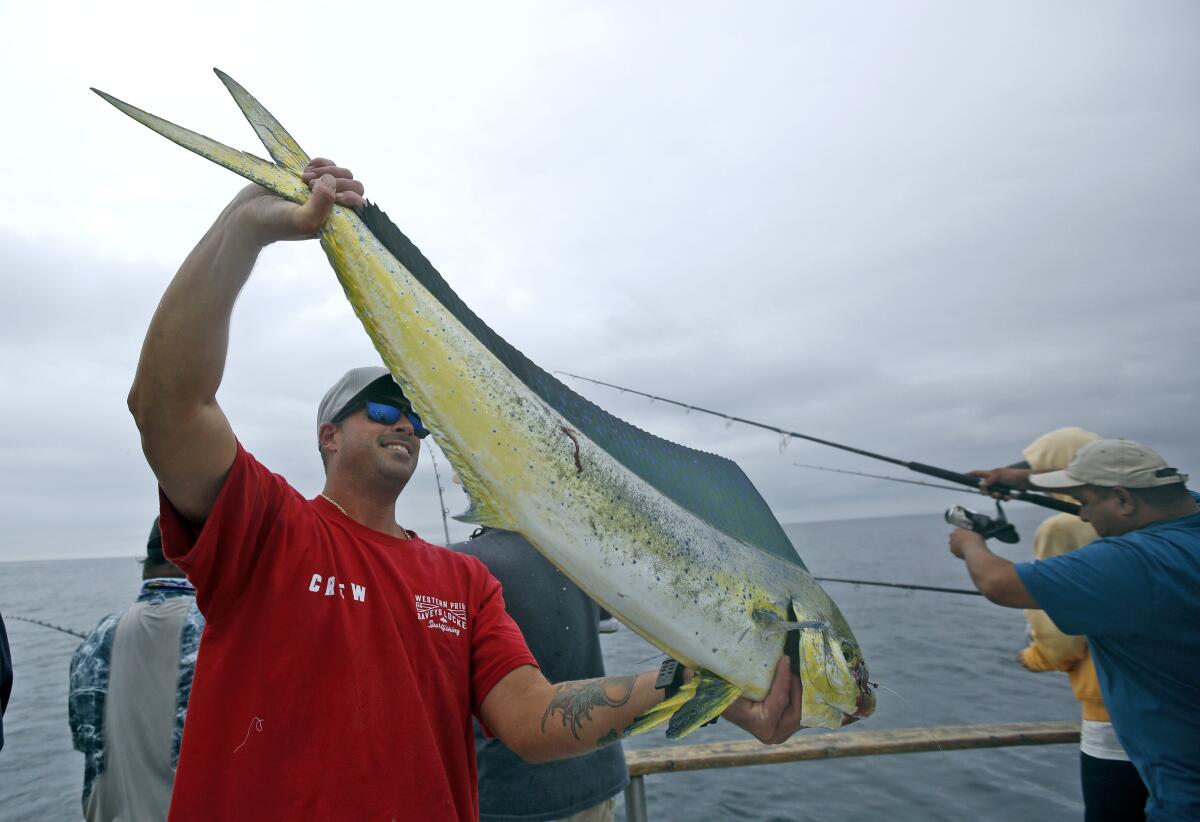
Dr. Noah Ben-Aderet, a fisheries biologist who is now the sustainable fisheries and aquaculture program manager at the California Ocean Protection Council, said that similar volumes of bluefin have been seen around Southern California for a couple of years.
He had an idea on what the natural bait might be that is drawing the bluefin to the area.
“Right now, we just have a lot of anchovies, like huge, huge schools of young anchovies that are fairly close to the beach, and the tuna really like to eat those,” Ben-Aderet said.
Ben-Aderet added that while the migration of certain species of fish cannot be attributed solely to climate change, it should not be ruled out as a factor.
“The jury is still out, but there is a lot of thought that the prevalence of bait has to do with our changing offshore conditions,” Ben-Aderet said. “I wouldn’t link it exclusively to climate change right now.”
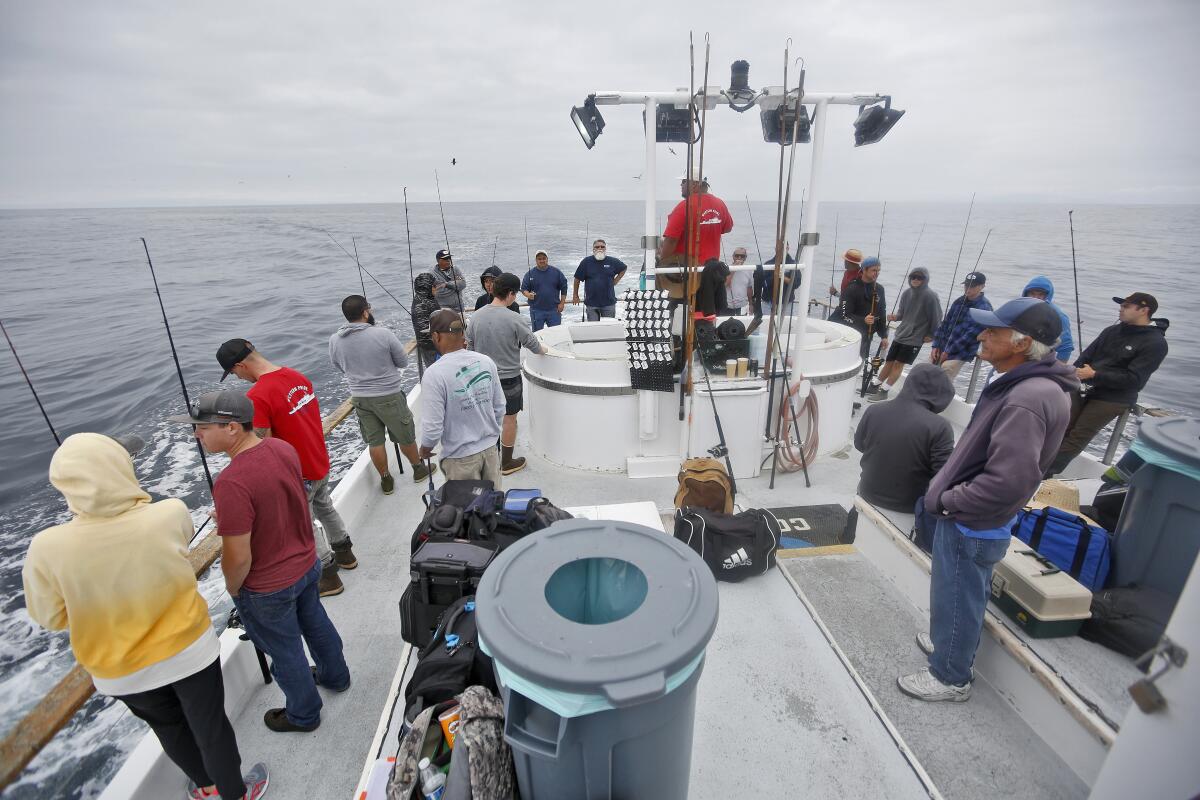
All the latest on Orange County from Orange County.
Get our free TimesOC newsletter.
You may occasionally receive promotional content from the Daily Pilot.




